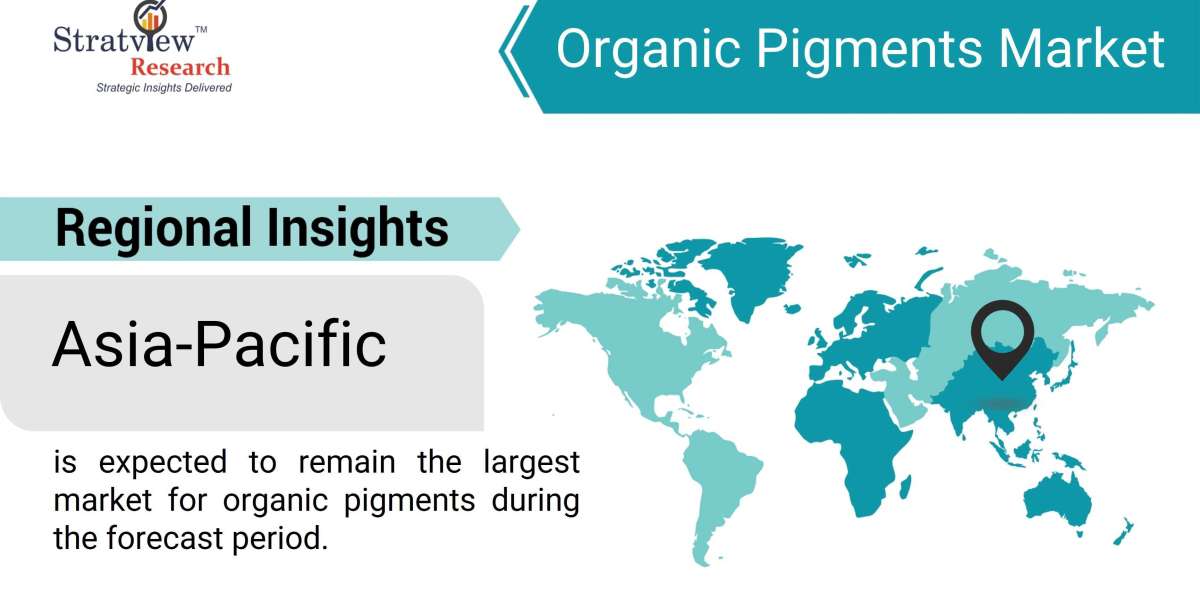The organic pigments market is projected to experience robust growth in the coming years, driven by rising demand across industries such as paints and coatings, plastics, textiles, and printing inks. These pigments, derived from carbon compounds, are favored for their vibrant colors, environmental benefits, and safety over traditional inorganic pigments. This article delves into the growth projections and key insights shaping the future of the organic pigments market.
Growth Projections
According to Stratview Research, the organic pigments market was estimated at USD 5.7 billion in 2022 and is likely to grow at a CAGR of 4.22% during 2023-2028 to reach USD 7.31 billion in 2028.
Factors such as increasing environmental regulations, a shift toward eco-friendly products, and technological advancements in pigment production are significant contributors to this growth. According to market research, the Asia-Pacific region, particularly countries like China and India, will lead the market expansion due to their booming construction, automotive, and packaging industries.
Asia-Pacific is expected to remain the largest market for organic pigments during the forecast period. Rising demand for organic pigments from a variety of end-use industries, including automotive, construction, and packaging, is likely to drive market growth in the Asia-Pacific region. Because the building business is growing in emerging nations and infrastructure investment is rising, more organic pigments will likely be used in the construction industry.
Key Insights Driving Market Growth
- Environmental Regulations and Sustainability Trends
Growing awareness about the environmental and health impacts of heavy metals used in inorganic pigments has led to stringent regulations, pushing industries toward organic alternatives. Organic pigments, free from toxic heavy metals like lead and cadmium, meet the rising demand for safer and more sustainable solutions. This shift is particularly evident in industries like food packaging, toys, and cosmetics, where safety standards are paramount.
- Technological Advancements and Product Innovation
Technological advancements are revolutionizing the organic pigments market. Innovations in nanotechnology and surface modification have improved the lightfastness, heat resistance, and dispersion properties of organic pigments. These advancements are enhancing their application range, allowing manufacturers to meet specific performance requirements in industries such as automotive coatings and specialty inks.
- Growing Demand in Emerging Markets
Emerging markets, especially in Asia-Pacific, are experiencing rapid urbanization and industrialization, driving up the demand for paints, coatings, and plastics. Organic pigments are increasingly used in these sectors due to their superior color strength and environmental benefits. The rise of e-commerce and digital printing in these regions is also contributing to the increased use of organic pigments in packaging and advertising.
- Expansion of Application Areas
The expanding application of organic pigments in new areas, such as electronic displays, bioplastics, and sustainable textiles, presents significant growth opportunities. As industries continue to innovate and explore new uses, the demand for specialized organic pigments with enhanced performance characteristics is expected to rise.
Conclusion
The future of the organic pigments market looks promising, with significant growth opportunities driven by sustainability trends, technological advancements, and expanding applications. As industries worldwide continue to prioritize environmental safety and performance, the demand for organic pigments is set to surge. Companies that invest in innovation and adapt to evolving market dynamics will be well-positioned to capitalize on the growth potential of this vibrant market.














